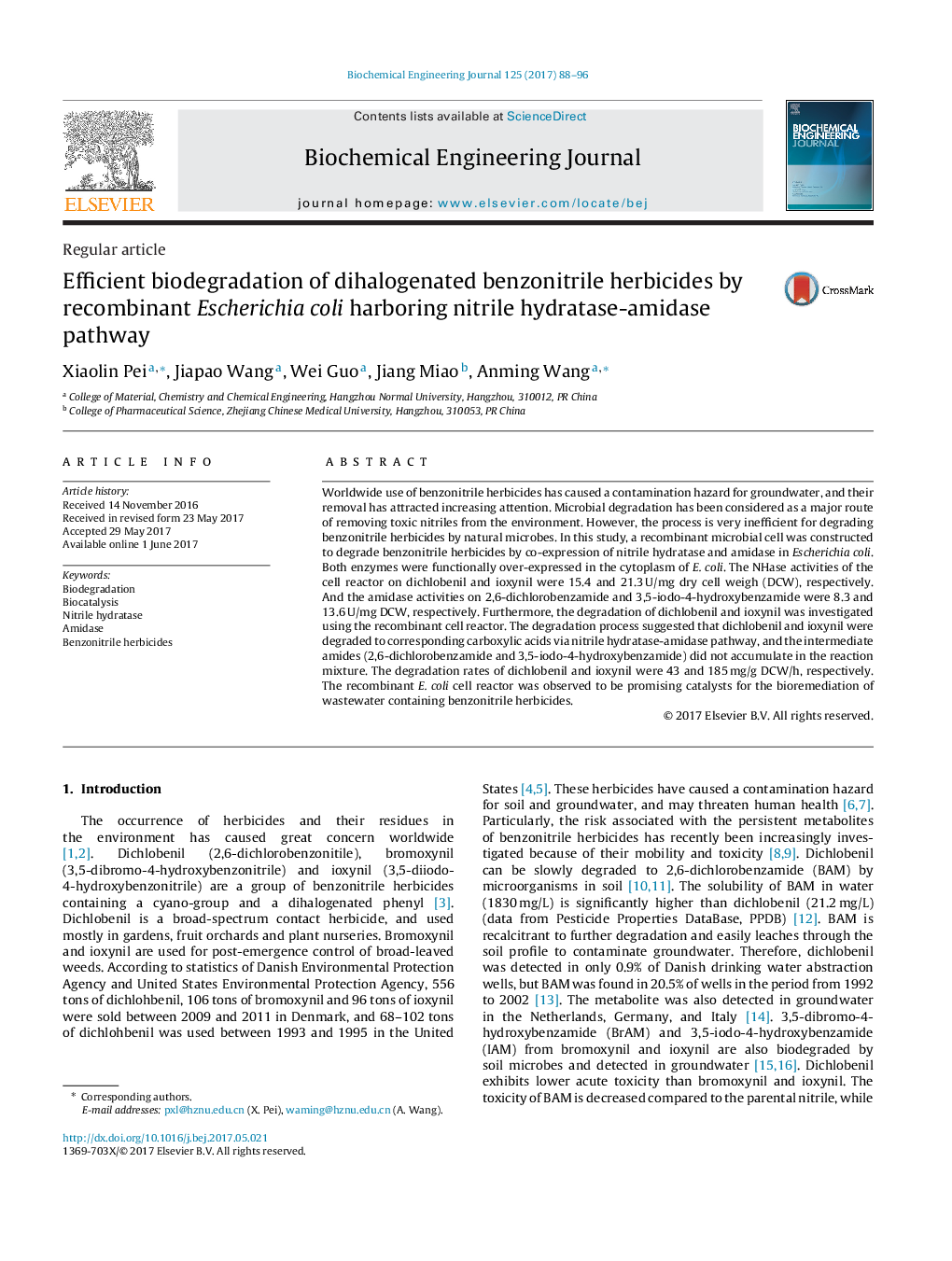| کد مقاله | کد نشریه | سال انتشار | مقاله انگلیسی | نسخه تمام متن |
|---|---|---|---|---|
| 4752127 | 1415990 | 2017 | 9 صفحه PDF | دانلود رایگان |

- Benzonitrile herbicides were efficiently degraded by recombinant Escherichia coli.
- Dichlobenil and ioxynil were degraded to corresponding carboxylic acids.
- Recombinant E. coli harbored NHase-amidase pathway using gene recombination.
- Hydratase and amidase were functionally co-expressed using plasmid pCDFDuet-1.
Worldwide use of benzonitrile herbicides has caused a contamination hazard for groundwater, and their removal has attracted increasing attention. Microbial degradation has been considered as a major route of removing toxic nitriles from the environment. However, the process is very inefficient for degrading benzonitrile herbicides by natural microbes. In this study, a recombinant microbial cell was constructed to degrade benzonitrile herbicides by co-expression of nitrile hydratase and amidase in Escherichia coli. Both enzymes were functionally over-expressed in the cytoplasm of E. coli. The NHase activities of the cell reactor on dichlobenil and ioxynil were 15.4 and 21.3Â U/mg dry cell weigh (DCW), respectively. And the amidase activities on 2,6-dichlorobenzamide and 3,5-iodo-4-hydroxybenzamide were 8.3 and 13.6Â U/mg DCW, respectively. Furthermore, the degradation of dichlobenil and ioxynil was investigated using the recombinant cell reactor. The degradation process suggested that dichlobenil and ioxynil were degraded to corresponding carboxylic acids via nitrile hydratase-amidase pathway, and the intermediate amides (2,6-dichlorobenzamide and 3,5-iodo-4-hydroxybenzamide) did not accumulate in the reaction mixture. The degradation rates of dichlobenil and ioxynil were 43 and 185Â mg/g DCW/h, respectively. The recombinant E. coli cell reactor was observed to be promising catalysts for the bioremediation of wastewater containing benzonitrile herbicides.
174
Journal: Biochemical Engineering Journal - Volume 125, 15 September 2017, Pages 88-96